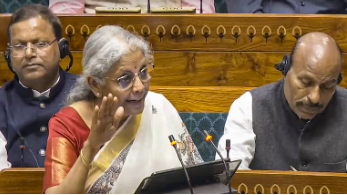India’s Budget Brings Tax Relief to Middle Class, Boosting Growth and Spending
Introduction
India’s latest budget aims to stimulate economic growth by providing tax relief to the middle class. This move is expected to increase disposable income, encourage consumer spending, and drive overall economic expansion. The government’s strategy focuses on easing the tax burden while simultaneously investing in infrastructure, social welfare, and business incentives. This article explores the impact of tax relief on the middle class and how it contributes to the country’s economic development.
Tax Relief for the Middle Class
The government has introduced several tax relief measures to provide financial ease to the middle class. These include increased exemption limits, standard deductions, and reduced tax rates for certain income brackets. The goal is to leave more money in the hands of taxpayers, allowing them to spend more on goods and services.
For instance, the budget raises the basic exemption limit and offers additional deductions on home loans, insurance, and investments. These incentives help families save more while also encouraging investment in key sectors such as housing and insurance, which contribute to economic growth.
Increased Disposable Income and Consumer Spending
With reduced tax liabilities, middle-class households have more disposable income. This increase in purchasing power leads to higher demand for goods and services, benefiting industries like retail, automobile, real estate, and tourism.
Higher consumer spending boosts business revenues, prompting companies to expand and hire more employees. This positive cycle supports job creation and enhances economic stability. As people spend more, the economy experiences a multiplier effect, further strengthening GDP growth.
Impact on Small Businesses and Startups
The budget’s tax relief measures also benefit small businesses and startups by increasing consumer demand. With more disposable income, people are more likely to spend on local businesses, supporting entrepreneurship and innovation.
Additionally, tax breaks and incentives for businesses allow entrepreneurs to reinvest their earnings into business expansion, technology upgrades, and workforce development. This contributes to job creation and economic diversification.
Investments in Infrastructure and Development
Apart from tax relief, the government has allocated substantial funds to infrastructure development, including roads, railways, and digital connectivity. Improved infrastructure reduces logistics costs, enhances business efficiency, and attracts foreign investment.
A strong infrastructure framework also creates employment opportunities in the construction and manufacturing sectors, further driving economic growth. With tax savings, the middle class can also invest in real estate, increasing demand for housing and construction.
Strengthening Social Welfare Programs
The budget incorporates increased allocations for healthcare, education, and social security programs, ensuring long-term benefits for the middle class. Lower tax burdens, coupled with improved government services, enhance the quality of life for citizens.
For example, subsidies on essential commodities and better access to affordable healthcare reduce financial stress on families. More investments in education lead to a skilled workforce, preparing the country for future economic advancements.
Encouraging Savings and Investments
Tax relief measures encourage middle-class individuals to invest in savings instruments such as fixed deposits, mutual funds, and pension plans. Increased investments lead to higher capital availability for banks and financial institutions, strengthening the financial system.
By promoting long-term financial planning, the government ensures economic resilience and financial security for households, reducing dependence on government welfare programs in the future.
Conclusion
India’s budget plays a crucial role in strengthening the middle class by offering tax relief, encouraging spending, and fostering economic growth. By reducing tax burdens, the government stimulates demand, supports businesses, and promotes financial security. With investments in infrastructure and social welfare, the budget lays the foundation for long-term economic stability. These measures collectively contribute to a prosperous and thriving economy, benefiting both individuals and the nation as a whole.


Leave a Comment